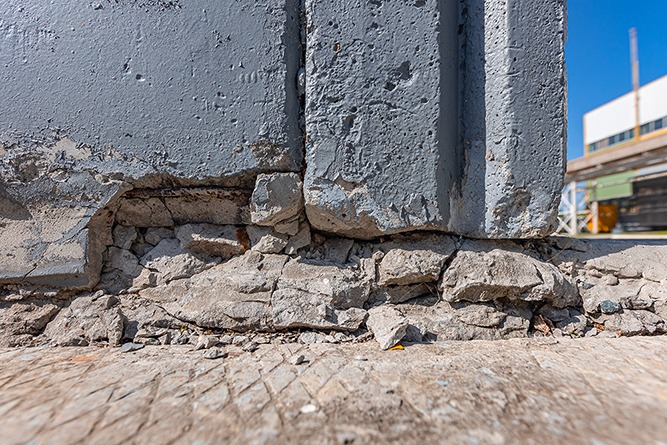Contractors, Subs, and Insurers: Who Pays in Multi-Party Construction Lawsuits?
Share:
When a construction project goes wrong, it rarely stops at one party pointing fingers at another. More often than not, what begins as a single lawsuit quickly snowballs into multi-party litigation, involving property owners, general contractors, subcontractors, design professionals, insurers, and sometimes even product manufacturers. The complexity can be overwhelming, but understanding how multi-party construction defect litigation works is the first step in managing risk and protecting your business.
In this guide, we’ll explore the mechanics of multi-party cases—from impleader actions and cross-claims to coordinating insurers and expert witnesses—and share practical insights on navigating this high-stakes environment.
Why Multi-Party Litigation is Common in Construction Defect Cases
Construction projects are intricate by nature, involving layers of contracts, multiple trades, and strict schedules. When a defect arises—like water intrusion, structural cracks, or faulty roofing—it’s rarely caused by just one mistake. Instead, liability is often spread across several parties, each with varying degrees of responsibility. For example:
- A homeowner sues a general contractor for a leaking roof.
- The contractor blames the roofing subcontractor.
- The roofing sub points to the architect’s design.
- The architect claims defective materials from the manufacturer.
What began as a one-on-one dispute has now expanded into a web of claims and defenses, requiring careful coordination.
Key takeaway: Multi-party litigation is about sorting out responsibility fairly, but it requires navigating layers of contracts, insurance policies, and legal doctrines.
Impleader Actions: Bringing in Third Parties
An impleader action allows a defendant to bring another party into the lawsuit if that party may be liable for all or part of the plaintiff’s claim. In construction defect cases, this is a common way contractors shift potential liability downstream to subcontractors or suppliers.
For instance, if a general contractor is sued for water damage, they might implead the plumber whose work contributed to the issue. This ensures that if damages are awarded, liability can be shared or shifted appropriately.
Why it matters: Without impleader, the contractor could be left holding the bag for damages that were not entirely their fault.
Cross-Claims and Counterclaims
In multi-party litigation, it’s not just plaintiffs versus defendants—defendants often file claims against each other. These are known as cross-claims, and they typically allege that one co-defendant is responsible for some or all of the damages.
At the same time, counterclaims can be filed back against the original plaintiff. For example:
- A homeowner sues for defective stucco.
- The contractor counters that the homeowner failed to maintain the property, making the damage worse.
Why it matters: Cross-claims and counterclaims complicate the case but also ensure that liability is allocated based on actual fault, not just the initial allegations.
Coordinating Multiple Insurers
Insurance is often the backbone of construction defect litigation. Contractors, subs, and design professionals may all carry different policies, and insurers must decide whether to defend, settle, or deny coverage. Challenges include:
- Overlapping policies: Two insurers may argue about which one should pay first.
- Reservation of rights: An insurer may agree to defend but later deny coverage for specific claims.
- Coverage gaps: Certain damages, like mold or faulty workmanship, may not be covered at all.
Practical tip: Contractors should tender claims to all potentially applicable insurers immediately and maintain detailed project records to support coverage arguments.
Managing Experts and Evidence
Construction defect litigation often hinges on expert testimony—engineers, architects, and contractors who can identify the cause of defects and estimate repair costs. In multi-party cases, coordinating these experts becomes critical.
- Each side may hire their own experts, leading to conflicting opinions.
- Courts may require joint inspections to streamline discovery.
- The quality of expert testimony can make or break a case.
Example: A single crack in a foundation could be attributed to poor design, faulty soil compaction, or improper concrete mix. Each explanation points to a different party, and experts are essential to sorting it out.
Mediation and Early Resolution
Because multi-party cases are expensive and time-consuming, courts often encourage mediation or settlement conferences. These give parties a chance to resolve disputes before trial, sometimes with insurers funding settlements proportionally based on fault. Advantages:
- Reduces legal costs.
- Speeds up resolution.
- Allows creative solutions (repairs instead of money damages, for example).
Pro Tip: Mediation works best when all relevant parties, including insurers, are present and prepared to negotiate in good faith.
Strategies for Contractors and Owners
For contractors, multi-party litigation highlights the importance of good contracts and documentation. For owners, it underscores the need to understand who is truly responsible for defects. Both sides can protect themselves with proactive steps:
- Contractors: Use indemnification clauses, require subcontractors to carry insurance, and document all work.
- Owners: Vet contractors thoroughly, request warranties, and keep maintenance records.
Important note: Florida’s Chapter 558 pre-suit process often requires notice and an opportunity to repair before litigation can proceed, creating a chance to resolve disputes before they become multi-party battles.
Conclusion: Turning Complexity into Strategy
Multi-party construction defect litigation is complex, but it doesn’t have to be chaotic. By understanding impleader actions, cross-claims, insurance coordination, and expert testimony, parties can navigate these cases with strategy instead of stress.
For contractors, preparation is the best defense—strong contracts, good recordkeeping, and prompt involvement of insurers and attorneys. For owners, awareness and vigilance can ensure that accountability is fairly assigned and costly defects are properly addressed.
Bottom line: The complexity of multi-party litigation reflects the complexity of construction itself. With the right legal guidance and proactive strategies, both contractors and owners can protect their interests and move toward resolution with confidence.
Caught in a Construction Dispute With Too Many Parties? Let Us Help You Cut Through the Complexity.
Multi-party litigation can feel like a maze of finger-pointing, legal jargon, and mounting costs. Whether you’re a contractor, subcontractor, property owner, or insurer, having the right legal team on your side can mean the difference between losing everything and reaching a fair resolution.
At DuFault Law, our construction litigation attorneys understand the unique challenges of Florida’s construction defect cases. We help you navigate impleaders, cross-claims, insurance battles, and settlement negotiations with clarity and strategy.
- Call us at (239) 422-6400
- Email us at contact@dufaultlaw.com
- Or Visit our Contact Page to schedule a consultation


Comments are closed